10 Great Reads for Summer 2019
Fiction
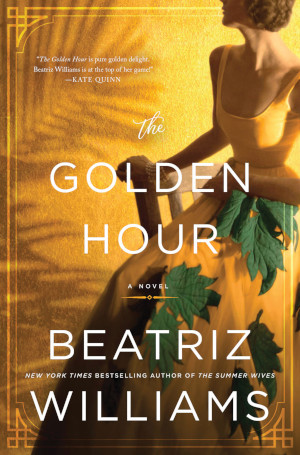 The Gold Hour
The Gold Hour
by Beatriz Williams
A young woman arrives in the Bahamas in 1941 to cover the duke and Duchess of Windsor for a society magazine but stumbles into a world of spies, lies, and intrigue.
(William Morrow)
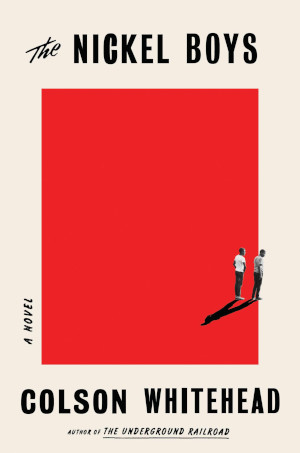 The Nickel Boys
The Nickel Boys
by Colson Whitehead
The Pulitzer Prize- and National Book Award-winning author imagines the story of two boys sentenced to a hellish reform school in Jim Crow-era Florida.
(Doubleday)
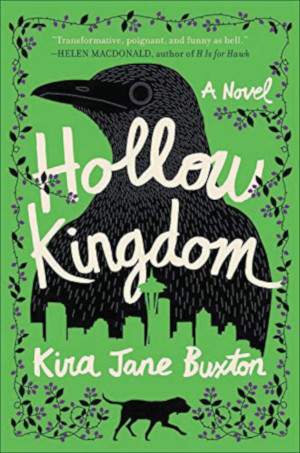 Hollow Kingdom
Hollow Kingdom
by Kira Jane Buxton
A pet crow fights to save humanity from an apocalypse in this uniquely hilarious debut from a genre-bending literary author.
(Grand Central)
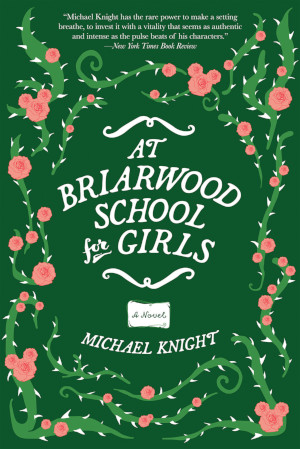 At Briarwood School for Girls
At Briarwood School for Girls
by Michael Knight
When the threat of a theme park intrudes on the lives of students and faculty at Briarwood, unexpected alliances form.
(Grove Atlantic)
Non-Fiction
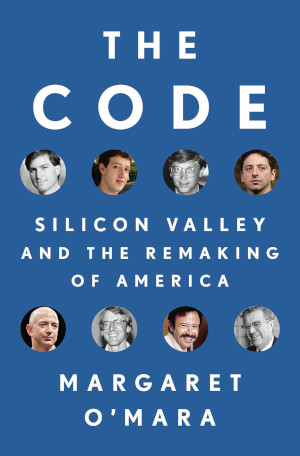 The Code
The Code
by Margaret O’Mara
An in-depth examination of Silicon Valley and the revolution that changed technology, economies, and the world.
(Penguin Press)
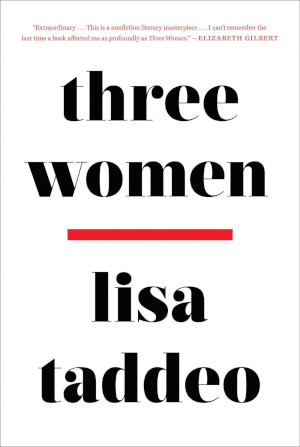 Three Women
Three Women
by Lisa Taddeo
The author spent eight years researching the sex lives of three American women to write this book, sure to be one of the most talked about of 2019.
(Avid Reader Press)
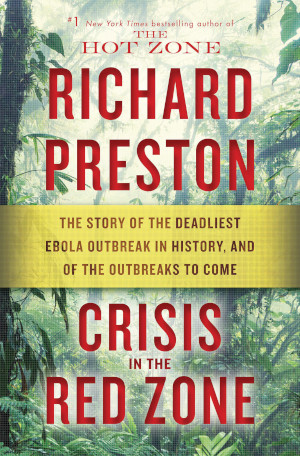 Crisis in the Red Zone
Crisis in the Red Zone
by Richard Preston
The author of The Hot Zone details the gripping account of the Ebola outbreak of 2013-2014 and warns us that outbreaks continue.
(Random House)
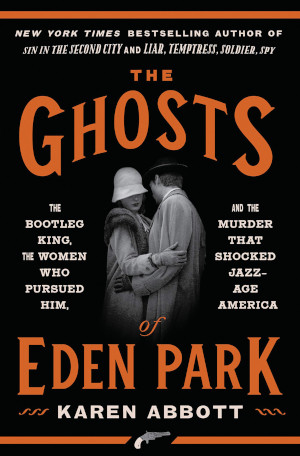 The Ghosts of Eden Park
The Ghosts of Eden Park
by Karen Abbott
The story of a prohibition kingpin taken down by a woman hired to the U.S. Attorney’s office right out of law school, told with all the detail and plot twists of a novel.
(Crown)
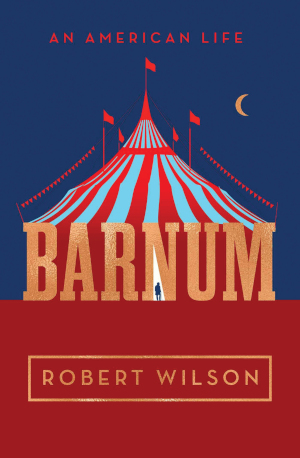 Barnum
Barnum
by Robert Wilson
The first major biography of P.T. Barnum in a generation, and a vivid account of the greatest showman the world has ever seen.
(Simon & Schuster)
Featured image: Shutterstock
Why Real Books Are Better
When Jeff Bezos unveiled the first Kindle in 2007, I ordered it straightaway. As a lifelong fetishist of the book, this didn’t quite feel right. But I withstood a surge of guilt about my small role in the metamorphosis of reading. In truth, the device was the invention of my dreams. The bookstore and the book, two of my favorite things, had merged into one piece of hardware. There was the promise that every volume in existence could be downloaded to the hand in less time than it took to yawn.
The device itself was wonky. It came with a keyboard that barely worked and an inelegant joystick that tested manual dexterity. Pages flipped at the wrong moment. The Kindle, however, was magic. I went on a spending spree — and unlike trips to the bookstore, the binges didn’t culminate in messy piles and never filled me with guilt about all the unread volumes staring at my desk. For a year, the Kindle traveled in the outside pocket of my tote and slept on my side table.
But if technology blinds us with its magic, the magic can wear off. By the time my third Kindle rolled in, I found myself returning to paper. My reversion wasn’t self-conscious. It happened slowly. I never really stopped collecting physical books. Because I worked for a magazine, review copies would arrive in the office with the postman. And there were old books that I couldn’t find on the Kindle, which I ordered from used-book sellers. The paper editions began to beckon. I didn’t think much about my transition back to paper. It just magnetically occurred.
I have no principled or scientific objections to screens. The internet is my home for most of the day. Twitter captures a huge share of my attention. I’m grateful for the rush of information, the microscopic way it is possible to follow politics and soccer and poetry and journalistic gossip. It’s strange, though, to look back and recall a day’s worth of reading. Of course, I could probably pose the question to my computer and find a precise record. But if I sit at my desk and try to list all the tweets and articles and posts that have crossed my transom, there are very few that I actually remember. Reading on the web is a frantic activity, compressed, haphazard, not always absorbed.
If the tech companies hope to absorb the totality of human existence into their corporate fold, then reading on paper is one of the few slivers of life that they can’t fully integrate.
The internet is an unending conversation; every argument is rebutted, shared, revised, and extended. It is a real-time extension of happenings in the world, exhilarating and exhausting.
I suppose my abandonment of the Kindle is a response to this exhaustion. It’s not that the Kindle is a terrible device. In fact, it’s downright placid compared to the horns and jackhammers blaring on social media. But after so many hours on the web, I crave escaping the screen, retreating to paper.
It was predicted that e-books would overtake the paper book, that they would become the totality of publishing. In 2010, the founder of MIT Media Lab, Nicholas Negroponte, was precise about the hour that paper would perish. “It’s happening in 5 years.” Well, doomsday has come and gone. Paper books have held their ground, and e-book sales have failed to accumulate at their predicted pace. Actually, they have plummeted. In 2015, e-book revenue dropped by 11 percent, while brick-and-mortar bookstore revenue increased by nearly 2 percent. My turn away from the Kindle wasn’t an idiosyncrasy, but part of a widespread tendency. My hunch is that a good portion of the reading public wants an escape from the intense flow of the internet; they want silent reading, private contemplation — and there’s a nagging sense that paper, and only paper, can induce such a state.
During the early Middle Ages, the book was quite literally a miracle. It was the means by which a priest conveyed the word of God. Literacy was sparse. In Europe, maybe 1 in 100 people could read. As the historian Steven Roger Fischer puts it, “to read” was to read aloud. Silent reading was a highly unusual practice. There are only a handful of recorded instances of it, worthy of note because they so shocked observers. Reading was perhaps the ultimate social activity. Storytellers read to the market, priests read to their congregations, lecturers read to university students, the literate read aloud to themselves. Medieval texts commonly asked audiences to “lend ears.”
Despite the relative intellectual bleakness of the era, literacy slowly crept beyond a small elite. The growth of commerce created the glimmerings of a new merchant class, along with professional texts that catered to its needs. Texts — once imposing blocks of letters, with one word jammed into the next, no white spaces separating them — were tamed by new syntactical rules.
There were increasingly breaks between words, punctuation even. Reading grew less strenuous, more accessible. It took several hundred years for the changes to fully register, for public reading to give way to silent reading. It was one of the most profound transformations in human history. Reading ceased to be a passive, collective experience. It became active and private. Silent reading changed thinking; it brought the individual to the fore. The act of private reading — in beds, in libraries — provided the space for heretical thought.
Fischer describes the change:
Active silent reading now prevailed, which demanded engagement. Hereby a reader became a doer, insofar as an author was now merely a guide who showed her or his silent and invisible audience a variety of paths. If early medieval listener-readers had almost always heard one chorus of voices singing Christian litany in harmonized unison, “humanist” scholars of the late Middle Ages were silently reading an entire world of voices, each singing a different song and in many tongues. … After generations of weaning from the oral thrall, countless readers could at last admit like Thomas à Kempis in The Imitation of Christ: “I have sought for happiness everywhere, but I have found it nowhere except in a little corner with a little book.”
There’s a strong impulse in our culture to run away from these little corners. We’re told that society’s winners will be the thinkers who network, collaborate, create, and strategize in concert with others. Our kids are taught to study in groups, to execute projects as teams. Our workplaces have been stripped of walls so that the organization functions as a unit. The big tech companies also propel us to join the crowd — they provide us with the trending topics, and their algorithms suggest that we read the same articles, tweets, and posts as the rest of the world.
We read in our little corners, our beds and tubs and dens, because we have a sense that these are the places where we can think best. I have spent my life searching for an alternative. I will read in the cafe and on the subway, making a diligent, wholehearted effort to focus the mind. But it never entirely works. My mind can’t shake its awareness of the humans in the room.
When we read deeply and with full commitment, we enter an almost trancelike state that mutes the outside world. The distance between words on the page and the scampering abstractions in our head collapses. As with the first generations of silent readers, heretical thoughts come and go; we’re stripped of intellectual inhibitions. That’s why we habitually retreat with our book to private spaces, where we don’t need to worry about social conventions, where the world can’t possibly read over our shoulder. That’s why we can’t jettison paper, even though the tech companies have tried their hardest to bring that about.
If the tech companies hope to absorb the totality of human existence into their corporate fold, then reading on paper is one of the few slivers of life that they can’t fully integrate. The tech companies will consider this an engineering challenge waiting to be solved. Everyone else should take regular refuge in the sanctuary of paper. It is our respite from the ever-encroaching system, a haven we should self-consciously occupy.
Surveillance on the internet is far different from the monitoring of the totalitarian state. The Soviet Union and its family of nations watched citizens to breed paranoia, to enforce the dogmas of the party, and ultimately to preserve a small elite’s undemocratic hold on power. We’re watched on the internet so that companies can more effectively sell us goods.
The fact that internet surveillance isn’t totalitarian, however, doesn’t mean that it does us no harm. We’re watched so that we can be manipulated. Some of this manipulation is welcome. We might revel in algorithmic recommendations of music, we’re pleased to be shown an advertisement for sneakers, we need computer help sifting through the mass of information. But there’s another way to describe the convenience of the machine: It is the surrender of free will — algorithms make choices for us. This isn’t so terrible, because our submission to manipulation is largely willing. Yet we rightly have a sense that we’re surrendering far more than we intend and that we’re being manipulated far more than we know.
Our digital future may be as glorious as advertised, or it could be a dystopian hell. But as citizens and readers, there’s good reason to throw sand in the machine. Only government policy can really dent the monopolies that increasingly control the world of ideas. But we can find moments when we willfully remove ourselves from the orbit of these companies and their ecosystems. It’s not a matter of dropping out, but of giving ourselves moments to ourselves.
Paper — in the form of books, magazines, and newspapers — is the place beyond the monopolies, where we don’t leave a data trail, where we are untracked. When we read words on paper, we’re removed from the notifications, pings, and other urgencies summoning us away from our thoughts. The page permits us, for a time in our day, to decouple from the machine, to tend to our human core.
We have deluded ourselves into caring more deeply about convenience and efficiency than about the things that last. Compared to the sustaining nourishment of the contemplative life and the deep commitment to text, many of the promiscuous pleasures of the web are vanishing. The contemplative life remains freely available to us through our choices — what we read and buy, how we commit to leisure and self-improvement, the passing over of empty temptation, our preservation of the quiet spaces, an intentional striving to become the masters of our mastery.
From World without Mind: The Existential Threat of Big Tech by Franklin Foer. Published by arrangement with Penguin Press, a member of Penguin Random House, LLC. Copyright © Franklin Foer, 2017.
This article is featured in the March/April 2019 issue of The Saturday Evening Post. Subscribe to the magazine for more art, inspiring stories, fiction, humor, and features from our archives.
Featured image: Shutterstock
10 Best Winter Reads
Fiction
The Dreamers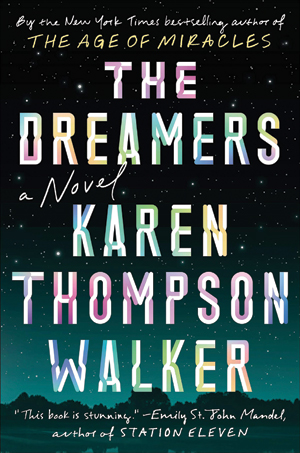
by Karen Thompson Walker
A mysterious illness causes people to fall into perpetual sleep in this eerie and beautiful novel by the author of the best-selling Age of Miracles.
Random House
The Current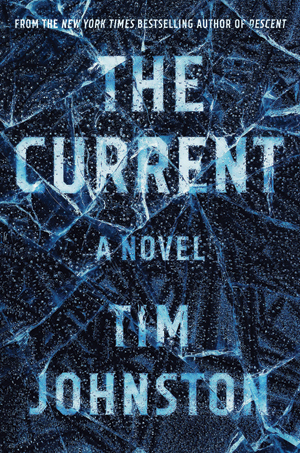
by Tim Johnston
In this thoughtful yet driving mystery, two young women plunge into a Minnesota river, but only one comes out alive. As she investigates, the layers peel back chapter by chapter.
Algonquin Books
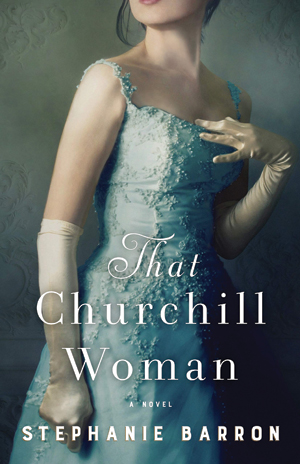 That Churchill Woman
That Churchill Woman
by Stephanie Barron
Winston Churchill’s American-born mother is the subject of this historical novel that reads like The Paris Wife meets PBS’s Victoria.
Ballantine
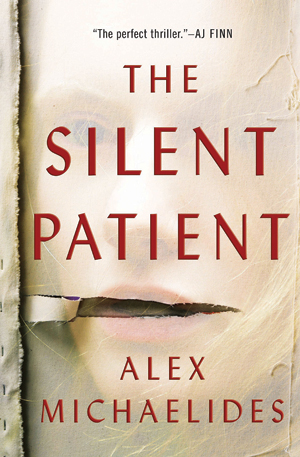 The Silent Patient
The Silent Patient
by Alex Michaelides
People will be talking about this debut thriller about a wife and husband with a seemingly perfect life, a shocking murder, and a therapist obsessed with uncovering the motive.
Celadon
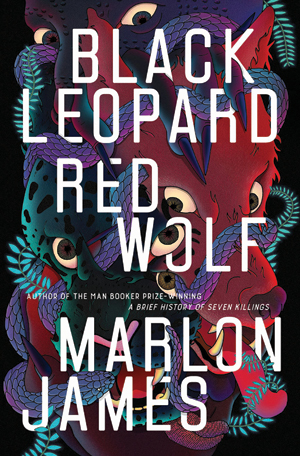 Black Leopard, Red Wolf
Black Leopard, Red Wolf
by Marlon James
The Man Booker Prize-winning author has written an African Game of Thrones, the first in a trilogy.
Riverhead
Nonfiction
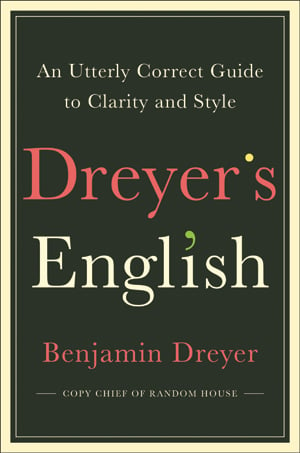 Dreyer’s English
Dreyer’s English
by Benjamin Dreyer
Could this be the next Eats, Shoots & Leaves? Language lovers will cherish this witty guide to proper writing by Random House’s longtime copy chief.
Random House
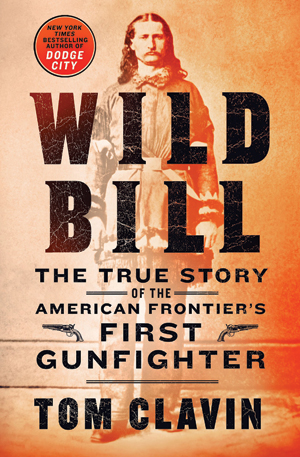 Wild Bill
Wild Bill
by Tom Clavin
He was literally a living legend, the first lawman of the Wild West, and this is his definitive biography by the bestselling author of Dodge City.
St. Martin’s Press
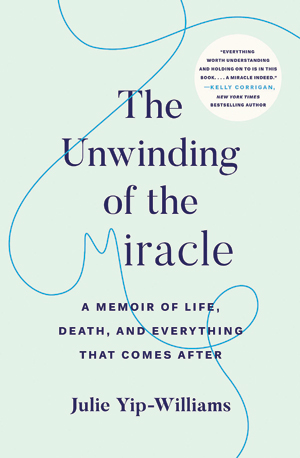 The Unwinding of the Miracle
The Unwinding of the Miracle
by Julie Yip-Williams
When the author was diagnosed with terminal cancer, she set out to write her story for her two girls, creating this vibrant exhortation to live life truly, openly, and bravely.
Random House
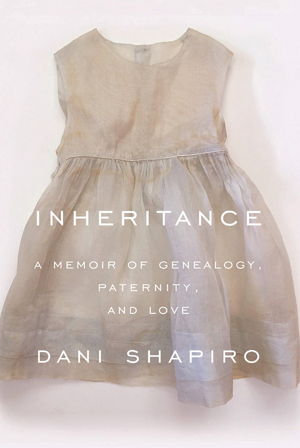 Inheritance
Inheritance
by Dani Shapiro
In 2016, the author submitted her DNA to a genealogy website and learned that her father was not her biological father, setting off this memoir about identity, paternity, and family secrets.
Knopf
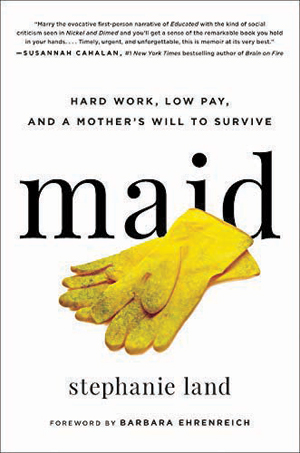 Maid
Maid
by Stephanie Land
This surprisingly beautiful, moving, and levelheaded memoir explores the contrast of a woman trapped in poverty while working as a maid for upper-class America.
Hachette
The Magic of Christmas in Fantasy Literature
Horror tales might take place near Halloween. Romantic comedies occasionally intersect with Valentine’s Day. And it’s not unusual for action movies to take place during the winter holiday season. However, it’s easy to overlook the deeply entrenched relationship between Christmas and fantasy literature. One could ascribe it to the general feeling of the magic of the holidays, or in some cases to the European tradition of telling ghost stories at Christmas. Whatever the case, there remains a strong association between the two, and we’ll look at six of the most famous instances in literature.
1. The Nutcracker and The Mouse King by E.T.A. Hoffman – 1816
This German story introduced us to what would become a multi-format holiday classic. Beginning on Christmas Eve, the original story introduces Marie, her inventor Godfather Drosselmeyer, the Nutcracker, and the seven-headed Mouse King. Over the years, the story would be adapted and changed (with Marie being renamed Clara in many other versions). The Three Musketeers author Alexander Dumas wrote his own version in 1844, and that particular take was adapted for the Tchaikovsky ballet. Most of the various versions include looks at the Doll Kingdom and the mouse society. The trope of toys coming to life would repeat in homages that are both obvious (like 1883’s Pinocchio) and less direct (Toy Story).
2. A Christmas Carol. In Prose. Being a Ghost Story of Christmas. by Charles Dickens – 1843
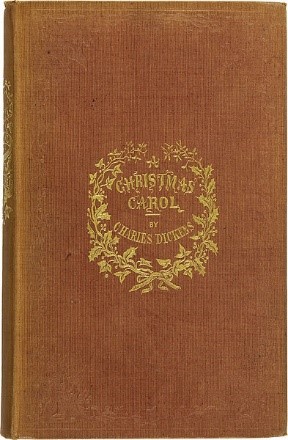
We hardly need to explain this one to you, but there are a few details you might not know. For example, Dickens wrote an earlier story that can be seen as a dry run for A Christmas Carol. It was called “The Story of the Goblins Who Stole a Sexton.” Appearing in The Pickwick Papers in 1836, he told the story of goblins helping a church official named Gabriel Grub see the light of Christmas by showing him the past and future. The later version, influenced in part by the works of Washington Irving, the growing popularity of Christmas celebrations in England, and Dickens’s own awareness of the problems facing poor children, was immediately popular upon release and sold through a first printing in days. Carol has never been out of print since its release, and has been adapted for stage, radio, film, and television numerous times. Dickens himself did 128 public readings of the story in his life (only the first was the full thing; thereafter, he did shorter versions).
3. The Life and Adventures of Santa Claus by L. Frank Baum – 1902
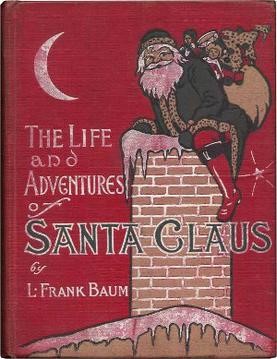
Though he’s best known for creating the wonderful world of Oz, L. Frank Baum also wrote this well-loved book that served as the basis for the 1985 Rankin-Bass special. This one goes in interesting places, as it posits a baby Santa found by the immortal Ak, who would entrust his care to a lioness and wood nymph. Santa eventually invents toys, which angers the demons that make children misbehave; this leads to a war between the immortals and the demons and their monster allies. The Council of Immortals later debate on whether to add Santa to their ranks. Baum wrote a short story sequel called “A Kidnapped Santa Claus” that involves more demon chicanery.
4. The Lion, the Witch, and the Wardrobe by C.S. Lewis – 1950
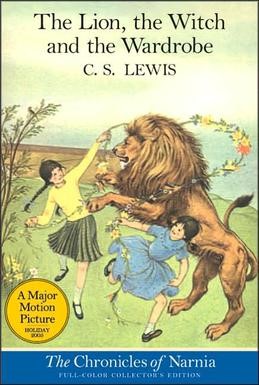
Christmas is rooted deeply in the heart of The Lion, The Witch, and The Wardrobe, the first book published in C.S. Lewis’s Chronicles of Narnia. Early on, the faun Mr. Tumnus reveals the threat of the White Witch, who is determined to make it “always winter, but never Christmas” in the fantasy land. Of course, the story relies on religious iconography, with Aslan representing a Christ-like figure. Despite those occasionally serious overtones, there’s still room for an appearance by Santa himself, or rather, Father Christmas. At a critical point in the plot, as Aslan’s return is disrupting the Witch’s plans, Father Christmas pays a visit to the child heroes of the story, gifting them with weapons that they’ll be able to use to fight the Witch’s army.
5. The Dark Is Rising by Susan Cooper – 1973
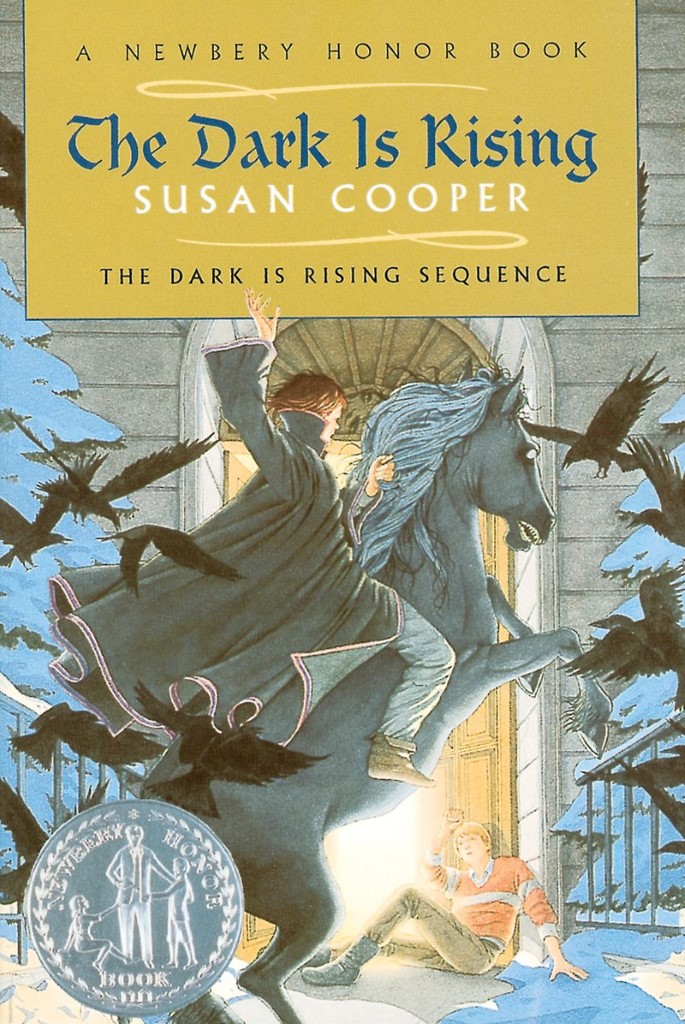
The second novel in Cooper’s Dark is Rising Sequence introduces Will Stanton, who will become the primary protagonist of the overall story. On his eleventh birthday, Stanton, the seventh son of a seventh son, discovers his magical destiny as an Old One of the Light, beings that battle the evil of the Dark. This plays out against the backdrop of a Welsh winter, as the “twelve days of Christmas” will be the time that the Dark is rising. A number of Welsh and English Christmas traditions are referenced and incorporated into the story, including a sequence of time travel that allows Will to witness a Yule feast of centuries past.
6. The Harry Potter Series by J.K. Rowling – 1997-2007
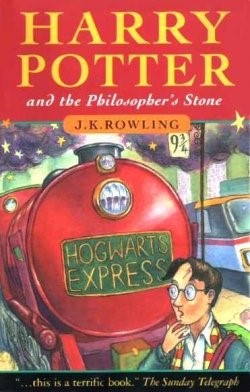
Though nothing overtly magical is ever suggested about the holiday in the Harry Potter series, Christmas itself plays a role in each of the seven books. There’s a bit of a suggestion that Christmas is somewhat magical to Harry himself as, in his life prior to the events of the first book, he’s never really gotten presents (or, quite, frankly, had much to celebrate). Christmas in the series becomes emblematic of family as Harry grows closer to Hermione, Ron, and the rest of the Weasley family. The books don’t delve into any larger issues with Christmas (there’s never a suggestion that, for example, Father Christmas is a real wizard), but its role in each book and the suggestion that, at the very least, it is special to Harry, adds extra weight to our feeling that Christmas is a fantasy staple.
As an added bonus, check out Litreactor’s Advent Calendar of Fantasy Fiction, where they recommend a different holiday fantasy story for each day of December.
Top 10 Books for Holiday Giving
Fiction
Nine Perfect Strangers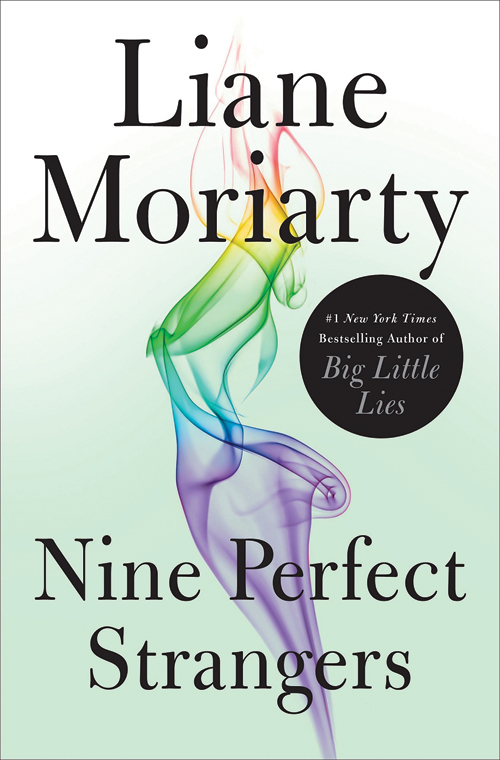
by Liane Moriarty
In the latest novel from the author of Big Little Lies, nine strangers gather at a health resort, and all leave changed.
Flatiron Books
Paris Echo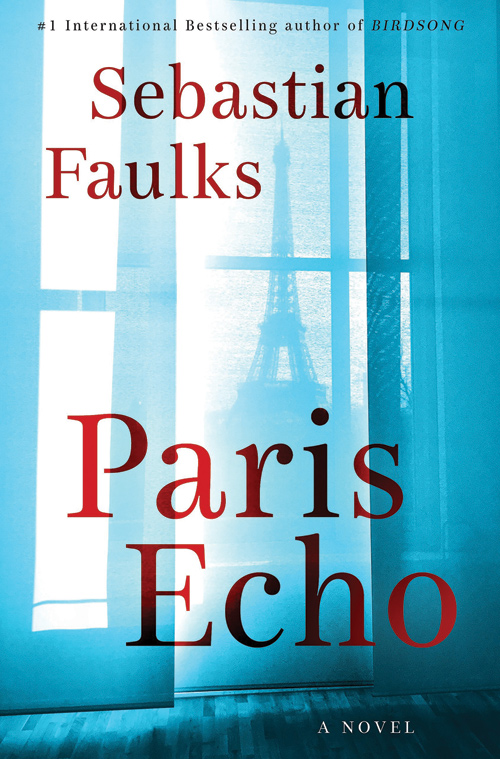
by Sebastian Faulks
The past and the present collide as Hannah, an American historian studying WWII in Paris, takes in an Algerian teenager as a lodger.
Henry Holt
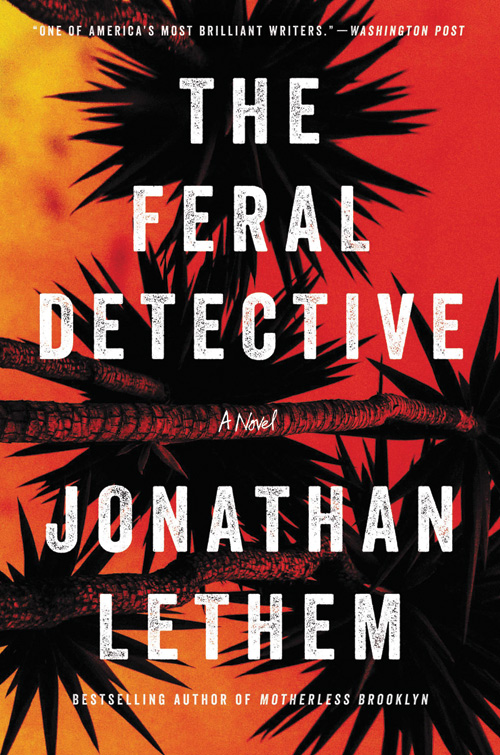 The Feral Detective
The Feral Detective
by Jonathan Lethem
The author’s first detective novel since Motherless Brooklyn is set in Los Angeles and features the quirky characters, as well as the zigs and zags, his fans expect.
Ecco
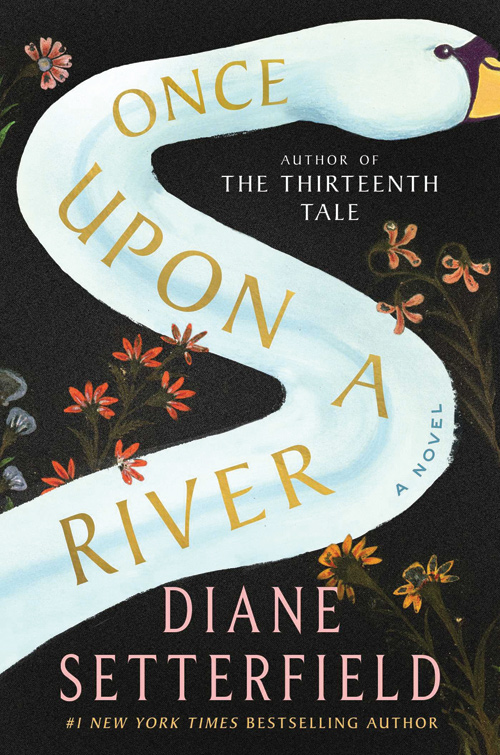 Once Upon a River
Once Upon a River
by Diane Setterfield
A mysterious girl pulled from a river in an English village is at the center of this spellbinding novel about science, magic, and the stories we tell.
Atria/Emily Bestler
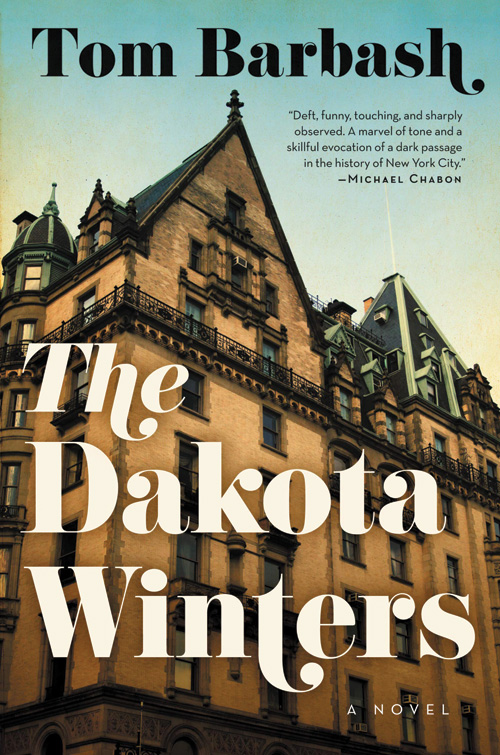 The Dakota Winters
The Dakota Winters
by Tom Barbash
In a classic New York family saga, 23-year-old Anton Winters returns to his family home in Manhattan’s famous Dakota Building in 1979 to try to save his father’s waning career.
Ecco
Nonfiction
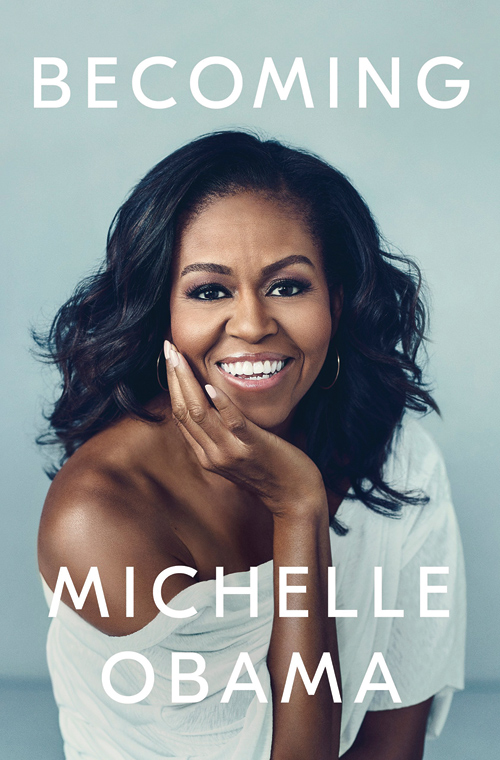 Becoming
Becoming
by Michelle Obama
A personal, intimate account of the public and private experiences that shaped the former first lady.
Crown
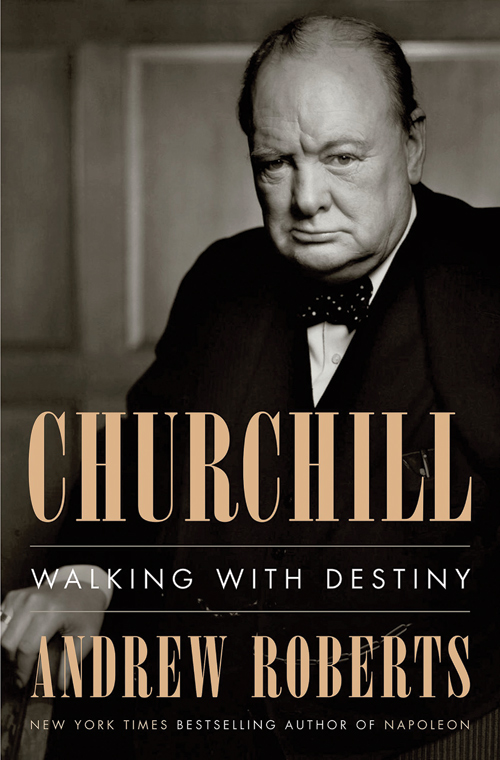 Churchill: Walking with Destiny
Churchill: Walking with Destiny
by Andrew Roberts
The author of a stunning biography of Napoleon turns his eye toward the great English leader, using extensive new historical documents.
Viking
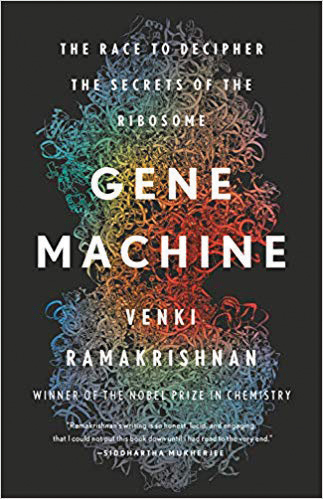 Gene Machine
Gene Machine
by Venki Ramakrishnan
The Nobel Prize-winning biologist tells the riveting story of his race to discover the inner workings of biology’s most important molecule.
Basic Books
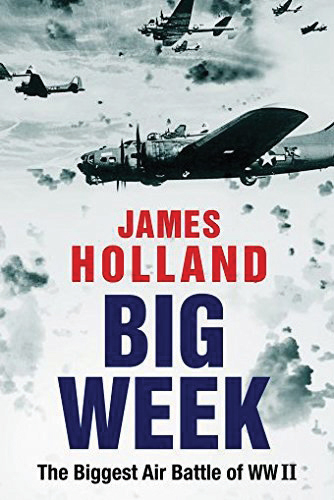 Big Week
Big Week
by James Holland
The noted historian chronicles the massive WWII Allied air battle to decimate the Luftwaffe, through the experiences of those who lived it.
Atlantic Monthly Press
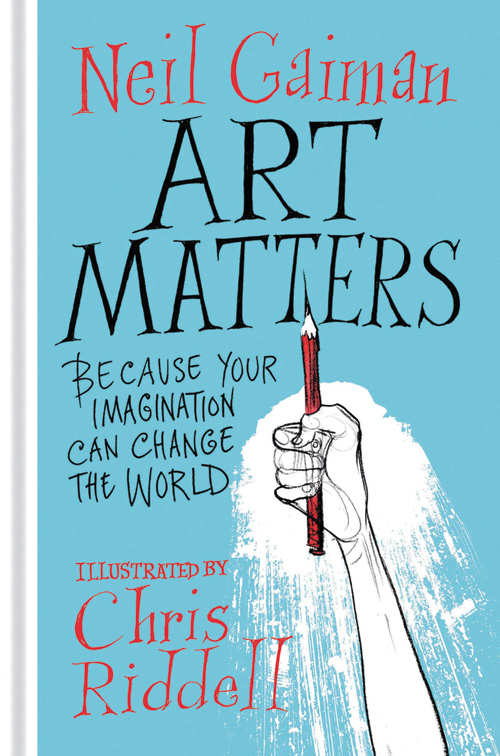 Art Matters
Art Matters
by Neil Gaiman
“The world always seems brighter when you’ve just made something that wasn’t there before,” Gaiman writes in this collection of four essays about the power and importance of art.
William Morrow
Adventures in the Kindle Trade
Six months after Maurice Sendak died in May 2012, The Believer published an interview British journalist Emma Brockes had done with him. She asked him his opinion of e-books. “I hate them,” Sendak responded. “It’s like making believe there’s another kind of sex. There isn’t another kind of sex. … Even as a kid, my sister, who was the eldest, brought books home for me, and I think I spent more time sniffing and touching them than reading. I just remember the joy of the book, the beauty of the binding.” [Read the related article “A War on Writers?” by Steven Slon from the Jan/Feb 2015 issue.]
I know the feeling. I too grew up holding, fondling, and smelling books. When I got older I began collecting them. I’ve spent hundreds, probably thousands, of hours hunting down books of writers I’ve gotten to know. When I began writing books of my own, there was such a thrill to see them in print. I will never forget walking past the Madison Avenue Bookstore in Manhattan the week my Conversations with Capote was published in the winter of 1985. It was my first book. And there it was. It was, to say the least, a very special, very personal moment.
My books — my own, and all the others I’ve collected — mean a great deal to me. But I no longer hold the opinion Mr. Sendak did. I don’t hate e-books. I can’t, because my last seven books have been — I hate to admit — e-books.
When Ann Patchett, best-selling author of Bel Canto and State of Wonder, and the owner of an independent bookstore in Nashville, Tennessee, was asked her opinion of e-books, she said, “I care that you read, not how you read.”
I care too. I care very much. The 11 books I am currently reading weigh 19.5 pounds; in my Kindle they weigh zero — that alone makes a good case for e-reading.
“The recent contractions and consolidations in the publishing business — layoffs, dwindling sales and advances, mergers of houses once thought unassailable — have left a widespread sense of unease about the durability of books,” Giles Harvey wrote in a recent New Yorker article about why failed novelists turn to writing memoirs about their failures. “Reading in bed with his girlfriend, novelist Benjamin Anastas wonders if the rise of e-books ‘will help keep writing alive and well into the digitized future, or if my problems are an early warning that my profession is about to go extinct.’”
I don’t think books will go extinct. More precisely, it’s become a changing art. According to the book research firm Bowker, self-publishing now accounts for more than 458,564 books annually, with Amazon leading the way. E-books cannot be ignored. The new problem is how to separate the good from the bad and the ugly.
In the April 2013 Wired, Evan Hughes wrote, “After centuries in which books and the process of publishing them barely changed, the digital revolution has thrown the entire business up for grabs. It’s a transformation that began with the rise of Amazon as an online bookseller and accelerated with the resulting decline of the physical bookstore. But with the shift to e-books — which now represent upwards of 20 percent of big publishers’ revenue, up from 1 percent in 2008 — every aspect of the existing framework is now open to debate: how much books will cost, how long they’ll be. … The only certainty is that the venerable book business, a settled landscape for so long, is now open territory for anyone to claim.”
Adam Gopnik, writing in The New Yorker, expressed a similar sentiment. “Thanks to the Internet, the disproportion between writerly supply and demand, always tricky, has tipped: Anyone can write, and everyone does, and beginners are expected to be the last pure philanthropists, giving it all away for the naches. It has never been easier to be a writer; and it has never been harder to be a professional writer.”
It has always been hard to be a professional writer. And yes, it’s a lot harder today. When I started writing books, I received an advance from a publisher that allowed me enough time to write the book. It was never a great deal of money — I got $50,000 for the first book, and $215,000 was the most I ever got, but that book (The Hustons) took me three years to write. Thankfully I was able to supplement my income by writing for magazines, until that world began to shrink as well. So the challenge is to continue being a professional writer — i.e., a writer who makes a living from his writing — in an e-book, self-publishing world. That was the quandary for most of the writers I knew. The only way to find out was to jump in. If I wanted to write what I wanted to write — novels, satire, poetry, memoirs — I would have to test the waters by sticking my own feet in them. I made an investment in myself. And a deal with Amazon. Would it turn out to be a deal with the devil? Or with my savior?
I’m not alone. Name writers like Stephen King, Joyce Carol Oates, and David Mamet have all put out e-book originals. But, as Bruce Miller, president of Miller Trade Book Marketing warned, “Celebrity authors may have great luck self-publishing, but most authors are not famous.”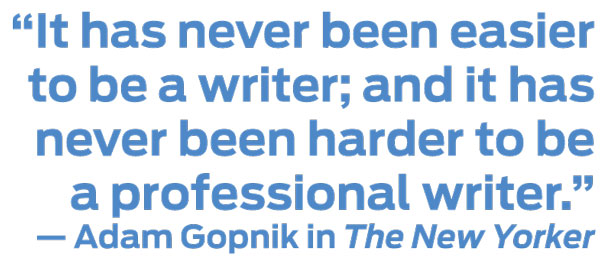
Amazon has added a new twist to this market by hiring an editor, David Blum, who carefully selects Amazon Singles, original works of 5,000 to 30,000 words of both nonfiction and fiction. He gets more than 1,000 submissions a month and has published 345 Singles in the first two years of the program. Approximately one-third of these have sold at least 10,000 copies, at an average of $2 per Single. As the writer gets 70 percent of this, it’s understandable why so many are trying to make the cut.
But the truth is, with every successful e-book writer’s story, there are hundreds of thousands of failures. “There are so many stories out there about people who have made it big self-publishing,” literary publicist Julia Drake told Publishers Weekly Select, a magazine devoted to self-publishing, “and there’s not enough out there about the 99 percent of the authors who’ve self-published a book and it disappears.” The only reality each writer faces is his own.
My first step was to spend $350 to digitize the four books of mine whose rights had been returned to me: Conversations with Capote, The Hustons, Conversations with Michener, Above the Line, and Conversations with Brando. Then I found out about Amazon’s White Glove Program, a program for established writers. If invited in, Amazon will take care of the business of digitizing your books and will work with you to get them ready for self-publication, pending your approval. I was invited to join that program. And then they told me about their Select program, where I would be “allowed” to offer any of my books for free to their readers for up to five days over three months. Why would I do that? I wondered. To raise my profile, I was told. The higher one’s profile, the better chance of gaining new readers. Freebies were designed to create word-of-mouth sales. And since I had more than one book, if a reader took one of my books for free, they might be encouraged to buy the others. Besides the four previously published books, I had seven others I was working on. My Amazon contact thought it would be a smart idea to release them all at the same time. Instead of putting out one book and waiting, I could put out all 11 books, so when someone went to my book page they could see all of them at once. But I was still some distance away from publishing. Before I could digitize them I needed my trusty copy editor to go over each and every paragraph. Once she was done, I needed to place the photos I wanted to include, to get permission to use illustrations and quotes, and to get each book cover designed. Once everything was in order, I gave the books to Amazon. When they said they were ready, I went over each of them and found problems that had to be fixed. That back and forth took a few more months. When it came time to click publish and see these books go public, I next had to think about how to market them. Because so many books go out into the electronic world each day, I was really just getting started. And this was the worst part of the process, because it meant letting all the people I knew, through email, Facebook, LinkedIn, and Twitter, that these books were now available.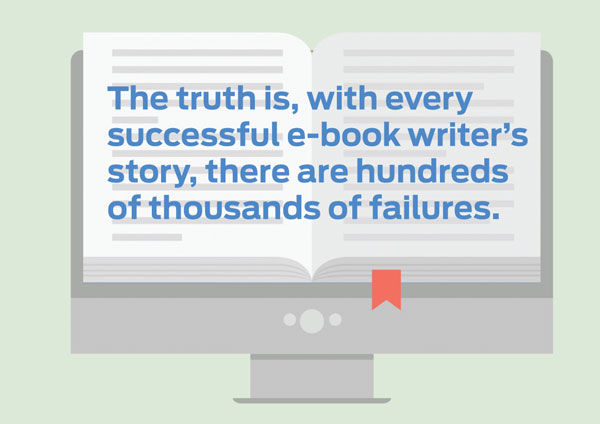
This was now my welcome to the real world of social networking. The world where all your friends, and “friends,” and former students send congratulations and encouragement and then go on with their busy lives. In other words, ignoring your pleas to buy your books. That’s when you begin to see the genius in Amazon’s free books idea. If they won’t purchase, then you can give them a taste, select one of the books, and nudge them to buy the others. So, I put up Capote first, and lo and behold, 2,000 people took it the first day. When sales of the other books remained meager, I offered them Brando for free. One thousand took that one. When no one was buying either of the novels, I put one up one month, the other the next. Four hundred people took them. Yoga? No! Shmoga!, my satire on yoga? I could barely give it away. How do I know how many people are buying, borrowing, or taking them for free? Because I can go to my reports on Amazon and check the month-to-date unit sales. Whereas before I had to wait six months to find out how any of my books were selling, now it is instant.
The first month, I earned over $600. The second, around $400. The third, under $200. It’s not exactly what I was selling in print. The Hustons had a 50,000 print run and supposedly sold 80 percent of those; I don’t have the figures of all the other books, but I do know that each of them sold at least in the four or five figures.
Stephen Marche, in Esquire, has pooh-poohed writers who whine about the terrible state of publishing today. He points out that “for writers starting out, there are more options, more means of access to the marketplace, than ever before.” And he quotes two pollsters (Gallup and Pew) who claim that the number of books the average American reads per year is 17. He says we’re in “the golden age for writers and writing.”
I agree that there are more options for writers today, but what Marche neglects to address is how many of these options allow a writer to actually earn a living from his writing. He points to how J.K. Rowling is richer than the queen of England and that Tom Wolfe got $7 million for his last novel, but there will always be writers who hit the literary lottery. It’s all the others in the game that Marche dismisses by saying “Everyone seems to understand and accept this golden age except the writers themselves.” Well, yes, the writers in the trenches. They don’t quite understand and accept. As for the average American reading 17 books a year? You’ve got to be kidding me. I know a lot of educated people. Very few of them read 17 books a year. Most people I know just read occasionally and watch a lot of TV. They can reference Mad Men, Game of Thrones, Seinfeld episodes, and Downton Abbey. But ask them what they thought of The Gravedigger’s Daughter or The Emperor of All Maladies and see if their eyes cross.
“It does seem a bit high,” said Joyce Carol Oates when I asked her what she thought about it. Oates is the only writer I know who can write 17 books a year. “Maybe these are self-help books and cookbooks,” she mulled.
Having taught gifted English majors at UCLA for 10 years, I’m pretty convinced that even they didn’t read much more than what they were assigned. It may be far easier for all of them, and for anyone else, to self-publish these days, but getting people to actually read these things? That’s a whole other story.
Are Books Really Here to Stay?

Will we see the end of book publishing in America?
The question would have been unthinkable not very long ago. Today, it’s worth asking because there’s the possibility that electronic books will outgrow and replace printed books. The first electronic book reader was introduced in 2006. Five years later e-books began to outsell printed books.
While digital publishing seems to be growing, the printed book industry is continuing its long decline. Countless independent bookstores have vanished from the American landscape, followed by the demise of the Border’s bookstore chain in 2011. Now, most Americans live within driving distance of only one bookstore—Barnes & Noble—and that company’s health is not exactly robust. (The company plans to close 20 of its stores every year for the next decade.)
However, the fear that book publishing will disappear has been around for more than a century. Back in 1958, for example, this fear prompted American Publisher Bennett Cerf to write “Books Are Here To Stay.” He was writing in response to the concern of parents, educators, and publishers that young Americans were becoming addicted to television. Kids, they said, showed no interest in reading but remained glued to the tube all day. Soon the great publishing houses would shut down, they assumed, and books would start to disappear from the American home.
But Cerf saw things differently, and he knew what he was talking about. He had run Random House publishing for 30 years, and could assure Post readers that “publishers cry more easily than anybody else on earth. … To hear them tell it, there’s always something threatening to bankrupt half the publishers extant. Television is merely their latest bugaboo.”
And then, interestingly, Cerf told us several things that were going to destroy publishing before television.
In the 1900s, he said, a New York publisher prophesied that interurban trolley cars would bring about the end of reading in America. The new trolley lines being built in those days allowed Americans to easily commute between the country and the city. They also permitted the youth to go joyriding for a day, taking a trolley from Chicago to Milwaukee, for example, or Philadelphia to Atlantic City, New Jersey. What youngsters, the publisher asked, would be content with books if they could ride for hours in a trolley car?
Even before the interurban lines were bearing youths away from their books, Cerf said, the bicycle was going to kill the book. Young men and women of the 1890s spent all their free time on bicycles, even taking 100-mile, weekend-long rides, leaving them no time or energy to read.
In the first few decades of the 20th century, books faced growing competition from the phonograph, the radio, and the affordable Model T that seemed to consume more and more of the average American’s time.
Yet with all these alternatives to reading, the popularity of books continued to grow. The Book Of The Month Club, founded 83 years ago this month, proved immensely popular. Between 1926 and 1929, membership grew from 2,000 to 100,000.
Today we are far from seeing the end of publishing. More than a million new titles are produced every year, including over 200,000 self-published books. This latter number is misleading, though, since many of these ‘books’ are purely digital and will never see a single sheet of paper.
As we’ve stated before in the Post Perspective, the love of reading and the love of books are not the same thing. The lovers of reading don’t care if they read text out of a book, off a smartphone, or from the back of a cereal box. As long as it’s legible, they’ll enjoy it.
Book lovers, on the other hand, are enchanted by the feel of a cloth binding, the scent of the pages, and crisp, dark type on white paper. They’ll spend fortunes on books, and care for them tenderly, and might even read some of them.
For lovers of reading, the future has never been better. More people are reading and writing than ever before, and the Web offers an endless supply of new, unexpected material. But for book lovers, the future does not look promising. The number of bookstores, and the size of their inventory, are not likely to grow. However, book lovers should take comfort in the fact that no form of entertainment has ever disappeared. The Internet hasn’t replaced television, which didn’t replace radio, which didn’t replace movies, which didn’t replace the theater, etc. Americans are continually rediscovering and reviving old entertainments and crafts.
We will see fewer large-inventory bookstores in the future, but a growth of print-on-demand (POD) publishers. These small, independent operations will print and bind any book of your choice. You can get the title you want in minutes, and the POD operation doesn’t have to pay the costs of maintaining an inventory of unsold titles.
The good news is that book publishing won’t disappear. The better news is that Americans today are reading more than ever.
The Bibliomaniacs of Book Row
It was far more than a single bookstore. It was New York’s ‘book district’—six blocks in lower Manhattan that contained over 36 bookstores. Today, Book Row is long gone. Only one store remains from its heyday (Strand Books, founded in 1927).
Back when it was crowded with booksellers, Book Row would have attracted anyone who loved reading. But it was irresistible to bibliophiles and bibliomanics. A bibliophile is anyone who loves the look, feel, and scent of books as much as their contents. Bibliomanics, however, are obsessed by books. They are fanatic hunters and compulsive buyers, usually purchasing more books than they can read in their lifetime.
In his 1944 article, “Book Row,” Don Samson gives a brief history of a bibliomaniac who haunted the area.
A shoe clerk from Brooklyn wandered into one of the secondhand bookshops on Book Row. He had never bought a book in his life, but picking up a musty volume, he liked the feel of it and bought it. The more he handled it, the more he liked it. He began buying books, and after a year his modest apartment was filled with them. Finally, his wife couldn’t take a bath because the tub was full of books. “You love your books more than you do me,” she wept, and threatened to go home to mother unless he got rid of them. He did. But within two weeks he was buying books again. His wife? She went home to mother.
There is something about books that provokes fascination and the odd compulsions that Samson saw in Book Row’s regulars:
A regular cash customer is the lady of the evening who collects the works of Marcel Proust. There is the Bowery bum who panhandles to buy books containing the word” hell,” books which he burns” to destroy the devil.” And there is the lawyer, internationally known, who collects books with uncut pages. “Virgin books,” he calls them.
Some people buy anything. Others, like the editor who has seventy-five copies of South Wind, will buy only copies of a single title. A collector who has all the dealers mystified is a banker who buys books in one series, Burt’s Home Library of popular classics. He tears the covers off and has the books and the covers restitched, switching titles and covers so that no book has the right title. Thus Alice in Wonderland becomes Black Beauty; The Divine Comedy, The Last Days of Pompeii, and so on. He boasts to the dealers, “You should see my library. It’s wonderful!”
The hangout for lovers of the unusual is a shop that specializes in strange books. Many are first attracted to the shop by the huge, black, plaster-of-Paris cat that crouches menacingly in the window; others are led here by their “vibrations.” An old German woman used to come regularly to buy books on the occult. One day she bought a book entitled “How to Make Yourself Invisible.”
“And she never came back,” says the dealer. “At least, we never saw her again.”
Book smellers are common. But they are hard to detect because, while running the nose along the bindings, they appear to be short-sightedly browsing. One smeller, a college professor, collects old, odoriferous volumes and wears the badge of his fraternity—a redrubbed nose. A well-known actress, a confessed smeller who never buys a book, is allowed the run of the shops because of the trade she attracts.
There are also book dusters. A good one can dust as many as fifty books in a single visit. He picks up a book, looks at the price marked in it, snaps it shut and, with a mighty huff and puff, blows the dust off before easing it back into place. Ironically, more men than women are dusters.
Odd behavior, I’ll grant you. An electronic book would never excite such mania, or even a semblance of this fascination. E-books will never hold the sensual appeal of what, for many Americans, is the “real thing”: a clean, hard-bound, octavo with clear, dark type on bright, clean pages. And books have several practical benefits. In a recent New York Times article, Sam Grobart wrote about the technical gadgets we won’t need in the future: desktop computers, digital cameras, and iPods. But he advised readers to keep their books. Compared to e-books, the real thing has “a terrific, high-resolution display,” durability, greater water-resistance, and “tremendous battery life.”